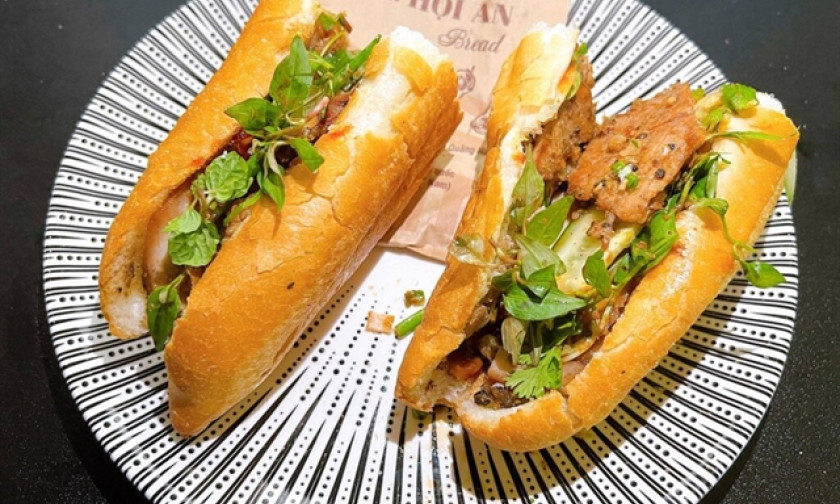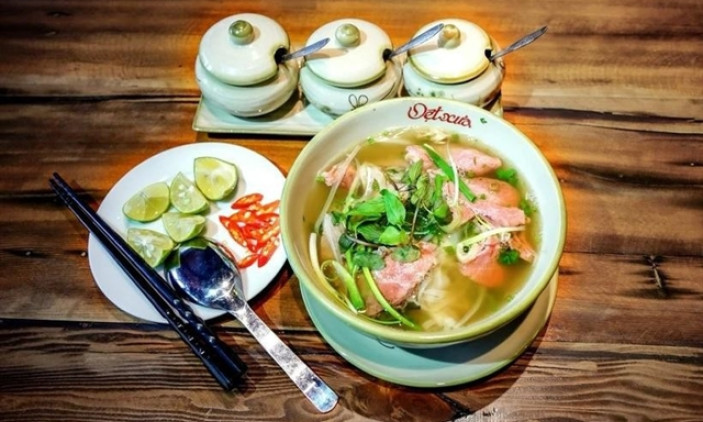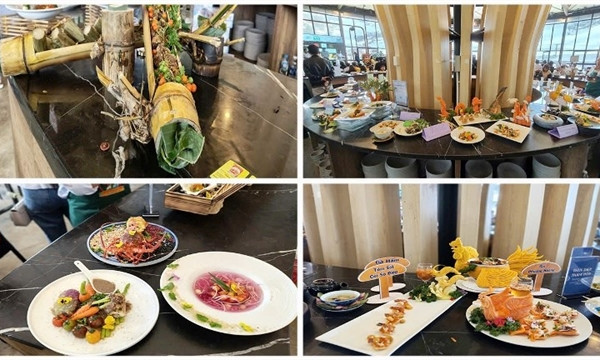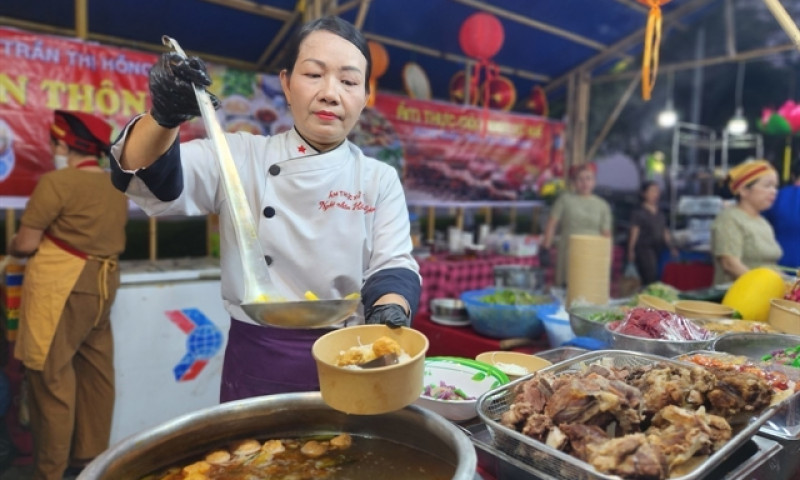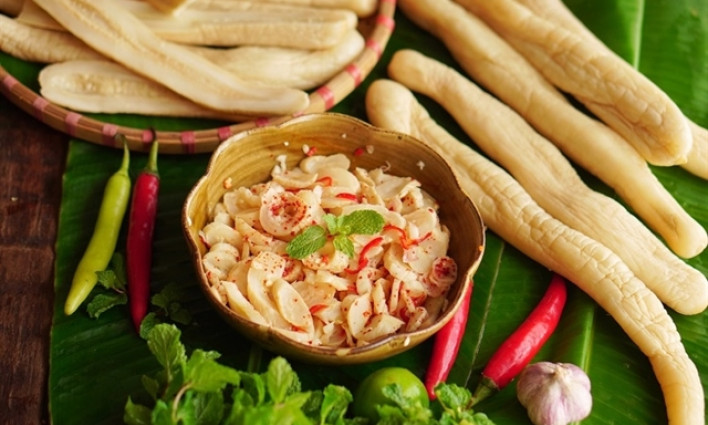Phú Thượng sticky rice impresses foodies from around the world
Artisan Nguyễn Thị Tuyến, who has been preparing sticky rice for more than 45 years, said no one knows exactly when the craft came into being, but since she was six, her grandmother told her that village cooks often used sticky rice grown right on the village fields to offer to God and ancestors at Tết or village festivals.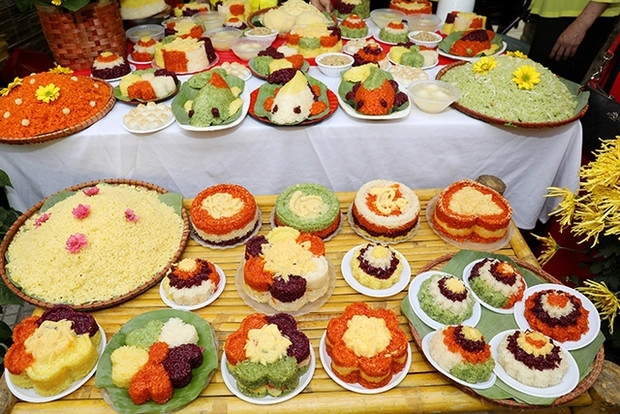
Hà Nội has not only become known worldwide for its specialties such as phở and bún chả, but also Phú Thượng sticky rice, which was chosen to serve local and foreign journalists and guests at the North Korea-United States Hanoi Summit a few years ago.
With special fragrance and its own characteristics, Phú Thượng sticky rice made an unforgettable impression in the guests’ memory, said a journalist from Australia, Ryan Nguyễn, who recently made his second tour to Việt Nam.
Artisan Nguyễn Thị Tuyến, who has been preparing sticky rice for more than 45 years, said no one knows exactly when the craft came into being, but since she was six years old, her grandmother told her that the village cooks often used sticky rice (locally known as nếp cái hoa vàng) grown right on the village fields to offer to God and ancestors at Tết (Lunar New Year) or village festivals.
Tuyến is the third generation of her family to do this job in Phú Thượng Village in Tây Hồ District.
“In my childhood, I often followed my grandmother and then my mother to carry the sticky rice (locally known as xôi) dishes to sell at street-corners in Hà Nội. I was taught how to choose quality rice and other ingredients to cook a tasty xôi.
Tuyến recalled despite the fact that many of her friends of her age left the village to set up their business in other localities, she invested her love and passion in cooking sticky rice in an effort to preserve her family traditional heritage left by her grandmother and mother and trying to keep its special flavour alive.
Though undergoing many ups and downs, the craft of cooking traditional sticky rice of Phú Thượng has been preserved and strongly developed. As a result, it was recognised as a national intangible cultural heritage last week by the Ministry of Culture, Sports and Tourism. It was also recognised as traditional craft village in 2016.
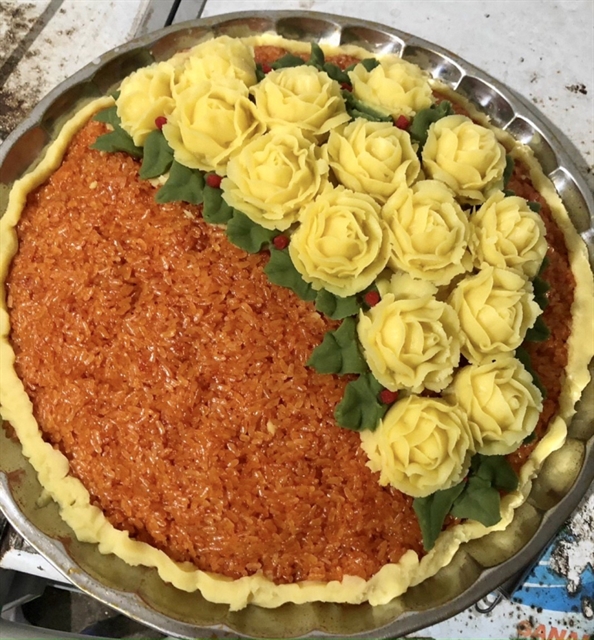
Nguyễn Thị Thịnh, 80, of Bát Đàn Street, told Việt Nam News that she and her family members have enjoyed Tuyến’s different sticky rice dishes since many years ago.
Thịnh said her family members can each choose their favourite variety of xôi because Tuyến has different sticky rice dishes to serve customers. They include sticky rice with boiled groundnuts (xôi lạc), sticky rice with spiny gourd (xôi gấc), sticky rice with crushed mung bean (xôi vò), sticky rice with mung bean and fried shallot (xôi xéo), sticky rice with corn (xôi bắp) and black bean sticky rice (xôi đậu đen).
“Tuyến’s sticky rice is of savoury flavour and soft. It is particularly suitable for the elderly and children,” said Thịnh.
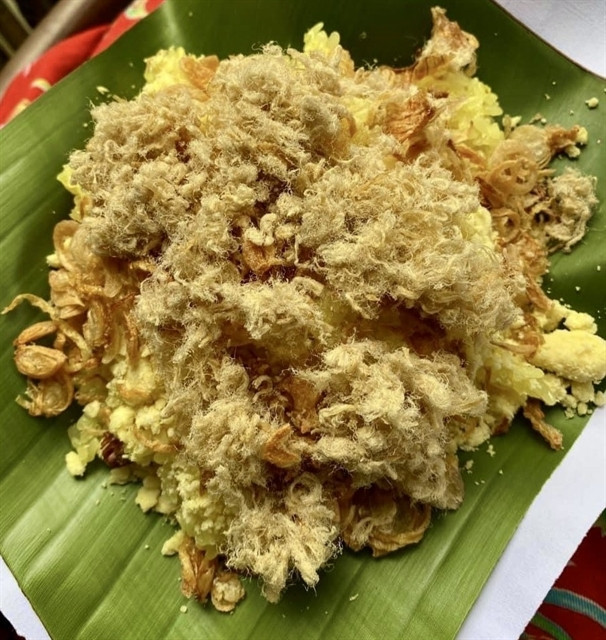
Tuyến said she has a number of regular customers in the Old Quarter as well as visitors and travellers to the capital.
Asked about her secrets, Tuyến said she always thought that sticky rice is a pearl given by heaven and earth for cooks who cherish and invest their souls in the dish, so quality ingredients must be given primary importance. All ingredients such as sticky rice, groundnuts, green beans, black beans and sesame must be chosen very carefully.
“I have to wake up at 2am to cook the xôi. With years of experience, I know exactly when the sticky rice is done to a turn, through checking the xôi and even just by the aroma, without setting a timer or measuring the temperature,” said Tuyến, adding that lotus, banana and wild dong leaves to wrap up the xôi should also be washed very carefully to ensure quality.

Tuyến said she would never forget the moment of being chosen to serve her sticky rice dishes at the North Korea – United States Hanoi Summit in 2019.
"It was a great honour and also an opportunity for me and the Phú Thượng Village cooks to introduce the xôi specialties to world friends through such big an event. First, many reporters arrived at our stand attracted by the colourful sticky rice dishes, but after trying it they said they were really impressed with the xôi for its soft, savoury and light sweet qualities," said Tuyến, noting that reporters from the US, Germany, South Korea and other countries, despite languages barrier, expressed their interest in the dish and praised its taste.
Tuyến said several of them asked her about the recipe, and where they could come to enjoy the dish again when they return to Hà Nội.
There are 600 households doing the craft of traditional cooking sticky rice in Phú Thượng. The product quality has reached national standard. The dishes have been present widely across the capital city, including restaurants and five-star hotels.


